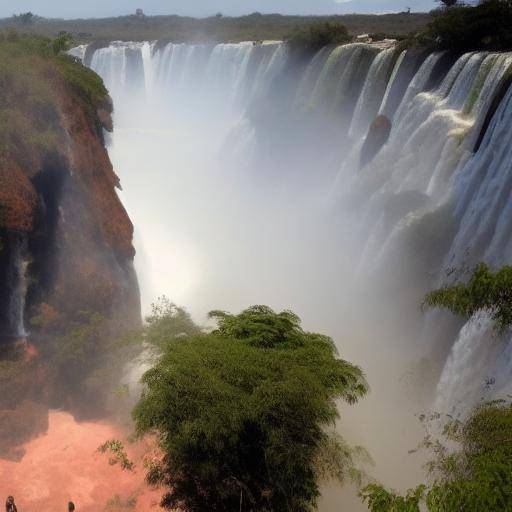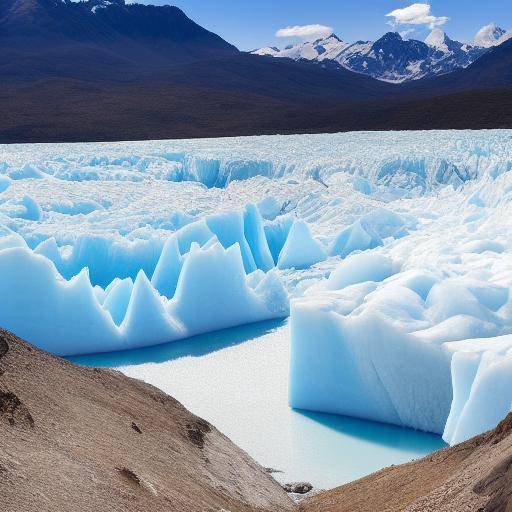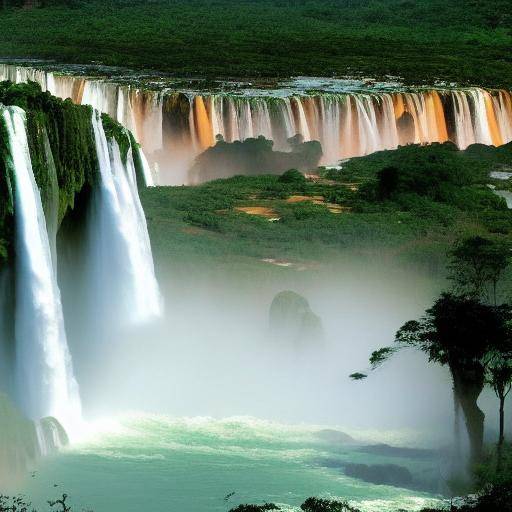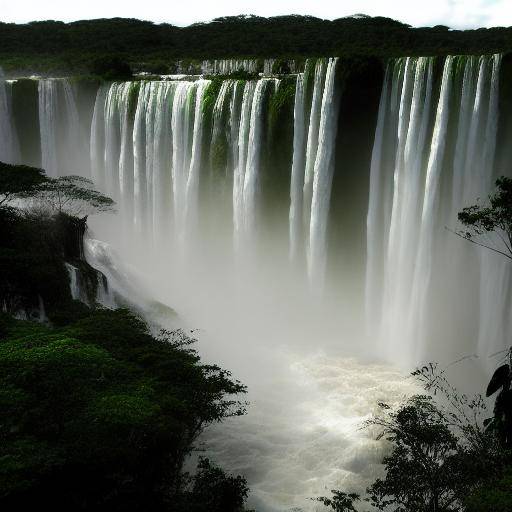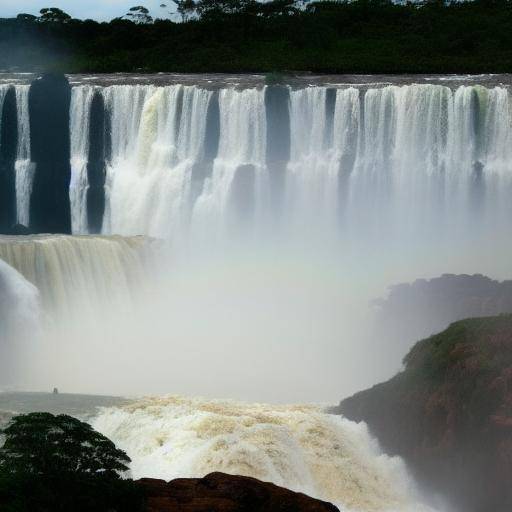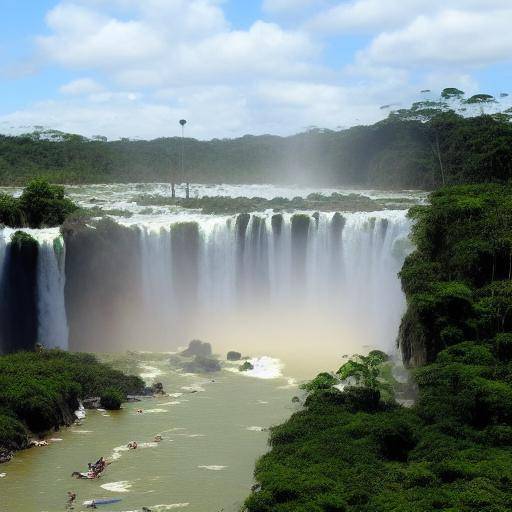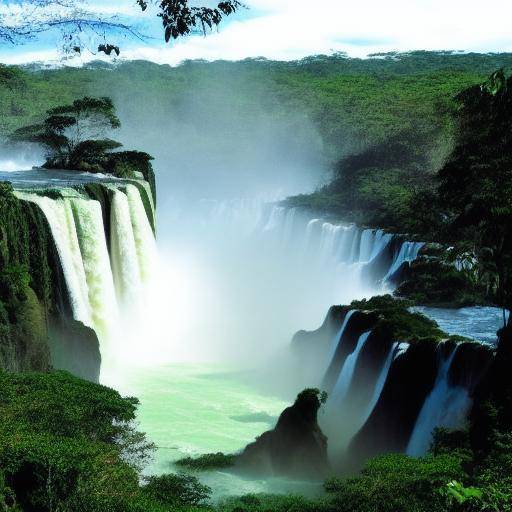
The Iguazú National Park, home to the majestic Iguazú Falls, is a natural treasure located in Argentina that captivates visitors from around the world with its imposing beauty and biodiversity. In this article, you will enter the magic of this place, exploring the cataracts, the lush jungle that surrounds them and their relevance as one of the natural wonders of the planet. You will discover the history, secrets, experiences and the importance of preserving this unique heritage. Focus on this unique adventure that will lead you to understand why Iguazú National Park is an indispensable destination for nature lovers and scenic beauty.
Introduction: The Natural Wonder of the Iguazú Falls
Located on the border between Argentina and Brazil, the Iguazú Falls are one of the most impressive natural wonders in the world. The Iguazú National Park, declared a World Heritage Site by UNESCO, hosts this natural spectacle that dazzles all those who have the fortune to contemplate it. From the imposing Devil's Gorges to its countless jumps and waterfalls, the cataracts offer a unique sensory experience that immerses you in a world of indescribable beauty.
History and Background of the Iguazú Falls
The Iguazú Falls have a fascinating history dating back centuries, when the indigenous tribes who lived in the region considered them a gift from the gods. With the arrival of European explorers and the subsequent creation of the Iguazú National Park, these cataracts began to gain recognition worldwide. Since then, they have been an emblematic destination for nature and adventure lovers, attracting avid travelers to witness their splendor in person.
Deep Analysis: Impact and Conservation
The impact of the Iguazú Falls goes beyond its visual beauty. Its preservation and conservation are essential to maintain the ecological balance of the region, protecting a wide variety of plant and animal species. In addition, sustainable tourism management in the area is crucial to ensuring that cataracts remain accessible to future generations. We will explore how these challenges are being addressed and how we can contribute to the protection of this wonderful ecosystem.
Comprehensive Review: Iguazú National Park and its Environment
In addition to cataracts, Iguazú National Park hosts a lush jungle that acts as a home for a wide variety of species. From jaguars and tapirs to exotic birds, the biodiversity of this ecosystem is amazing. Immerse yourself in the vastness of the jungle and discover its importance for environmental balance and the preservation of biodiversity.
Comparative Analysis: Iguazú Falls and Other Natural Wonders
Compare the Iguazú Falls with other natural wonders of the world, exploring similarities, differences and the uniqueness that makes them stand out. From the Niagara Falls to the Grand Canyon, every natural wonder has its own history and irresistible appeal for nature and adventure lovers.
Practical Tips and Recommendations to Visit
Get ready for your trip to Iguazú National Park with practical advice to make the most of your experience. From better moments to visit to recommended activities, you will be ready to explore this natural paradise with confidence.
Perceptions of Experts and Future Perspectives
Get valuable information from conservation and ecotourism experts on the future of Iguazú Falls and their environment. Discover current initiatives and emerging opportunities that are shaping conservation and sustainable tourism in the region.
Conclusion and Frequently Asked Questions
Conclusion
On this journey through the Iguazú National Park, we have explored the magic of the Iguazú Falls, the richness of their natural environment and the importance of preserving this wonder for generations to come. The combination of majestic cataracts and lush jungle creates a unique scenario that captivates all who have the privilege of visiting it. The imposing beauty of the cataracts and their natural environment exemplifies the importance of protecting and appreciating the natural beauty of the planet.
Frequently asked questions
What is the best time to visit the Iguazú Falls?
The best time to visit the Iguazú Falls is during the rainy season, from November to March, when the water flow is more impressive. However, it is also possible to enjoy the falls for the rest of the year, each season offers its own charms.
What activities can be done in the Iguazú National Park as well as visiting the falls?
In addition to contemplating the cataracts, the park offers hiking, bird watching, photographic safaris and tours through the lush jungle, providing an integral experience in contact with nature.
How to get to Iguazú National Park from Buenos Aires or other major cities in Argentina?
You can reach Iguazú National Park by air, through Iguazú International Airport, or by land, from nearby cities such as Puerto Iguazú. There are also buses and excursions from other major cities in Argentina.
What are the impacts of tourism in Iguazú National Park?
Tourism, if not managed sustainably, can have impacts on the local ecosystem, including loss of natural habitats and wildlife disturbances. It is essential to promote responsible tourism that minimizes these impacts.
Are there accommodation options within Iguazú National Park?
Yes, the park has accommodation options ranging from boutique hotels to camps, allowing visitors to enjoy an immersive experience in nature.
What is the importance of the conservation of the Iguazú National Park?
The conservation of Iguazú National Park is crucial to protecting its unique biodiversity, preserving its ecosystems and maintaining its attractiveness for future generations. Conservation also benefits local communities in promoting sustainable tourism and environmental awareness.
In conclusion, the Iguazú National Park with its Iguazú Falls and its lush jungle is a natural treasure that must be contemplated, admired and protected. Through this exploration, we hope to have awakened your curiosity and provided a deeply enriching vision of this natural wonder. Come and discover for yourself the captivating beauty of the Iguazú Falls in the heart of Argentina!

